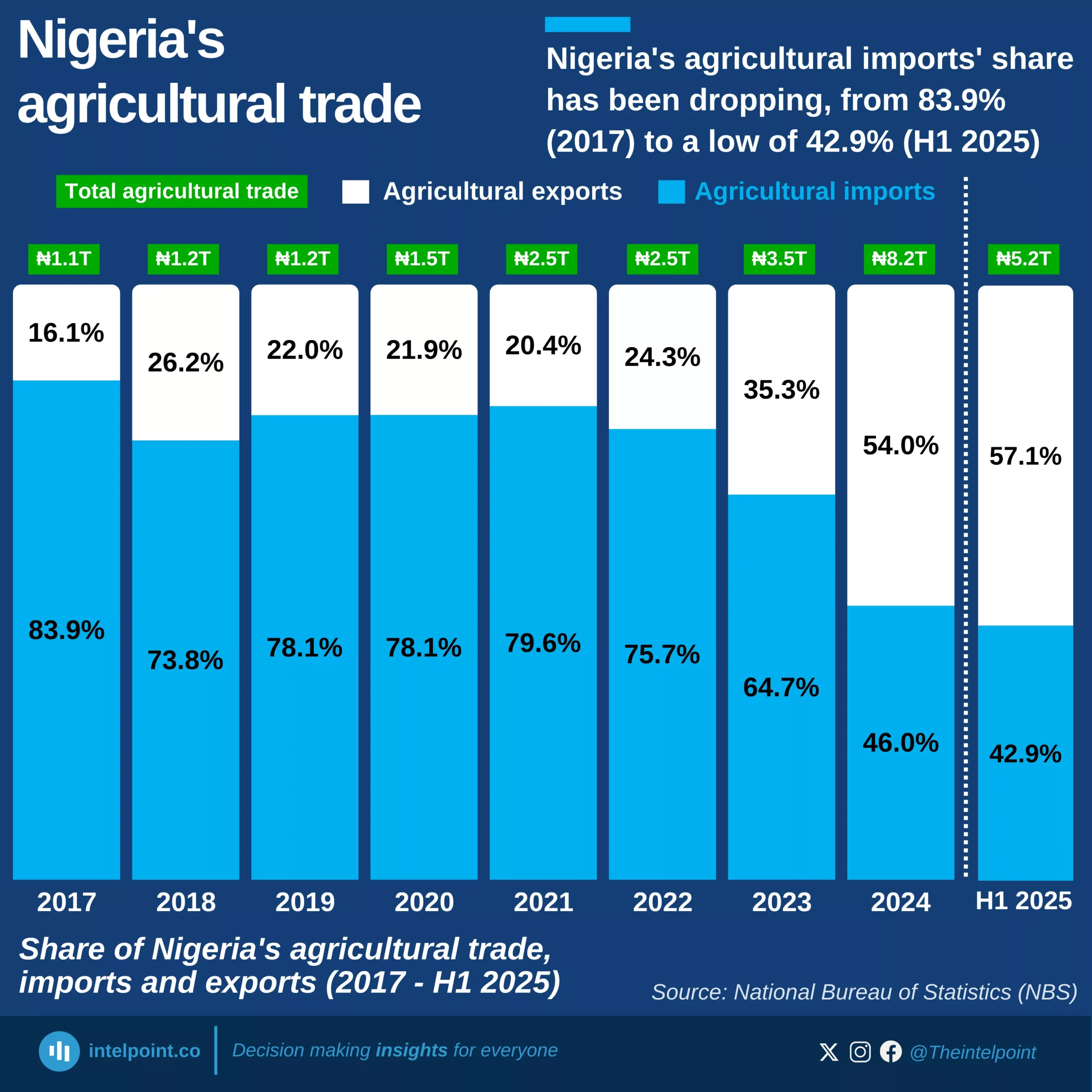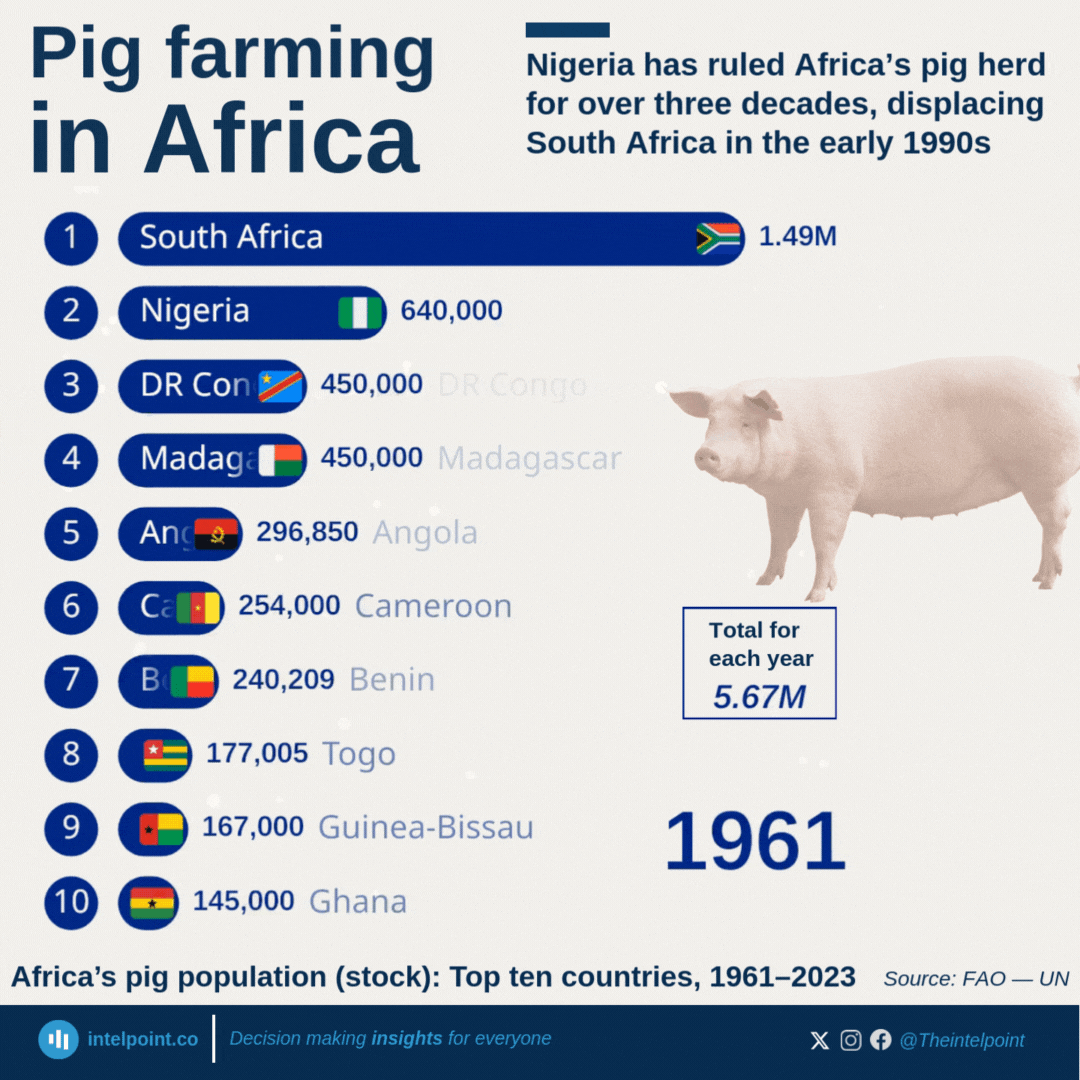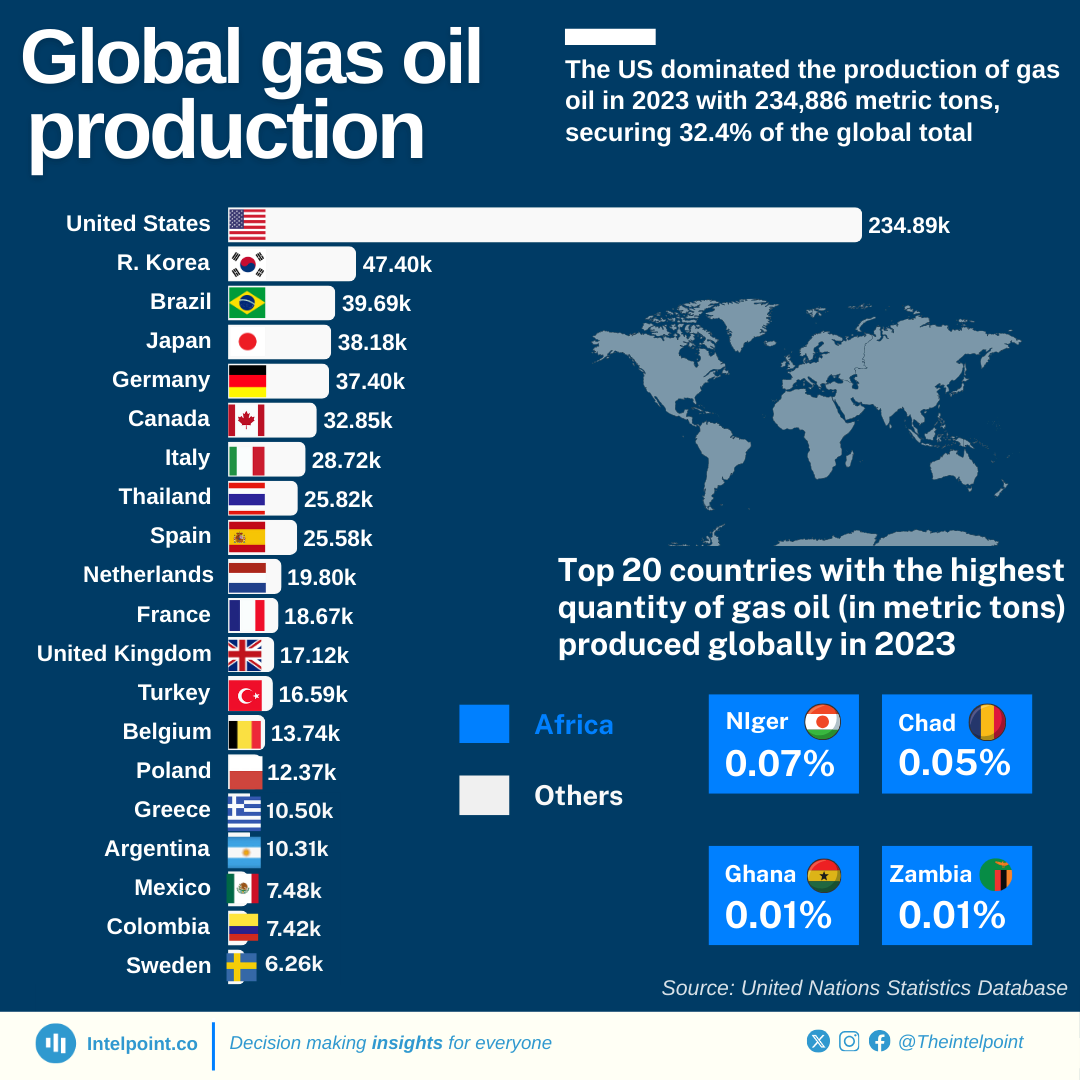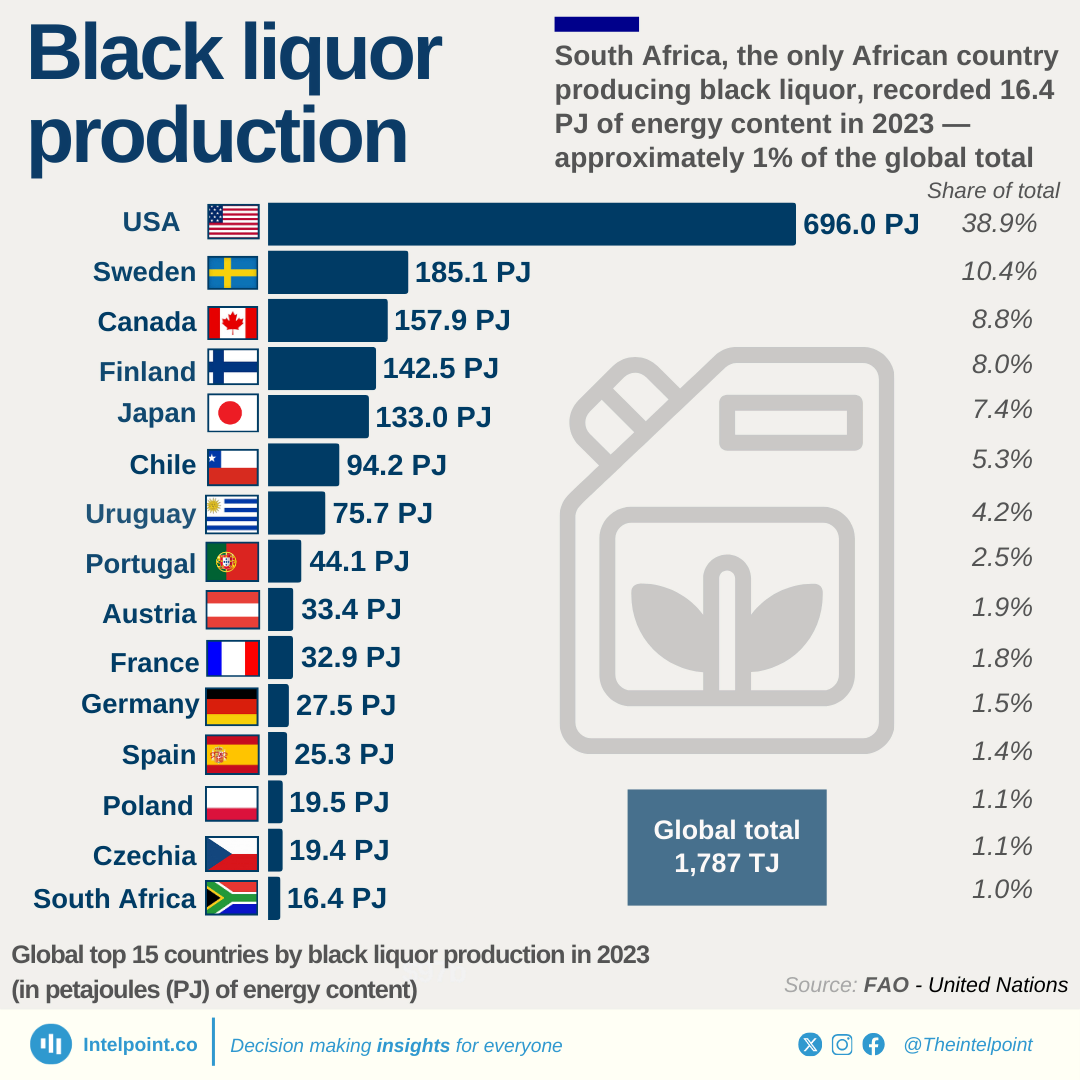Over six decades, global ginger production has been led overwhelmingly by India, which has consistently outproduced every other country by a wide margin. In 2021, India set a record with over 2.2 million metric tonnes harvested, more than triple the output of Nigeria, its closest rival.
Despite the gap, Nigeria has emerged as the world’s second-largest producer, overtaking traditional players like China and Nepal. Yet, the global ginger landscape remains concentrated, with just five countries accounting for the vast majority of total output. Meanwhile, production trends have been anything but stable, with sharp year-on-year fluctuations highlighting the sector’s exposure to environmental, economic, and policy shifts.





